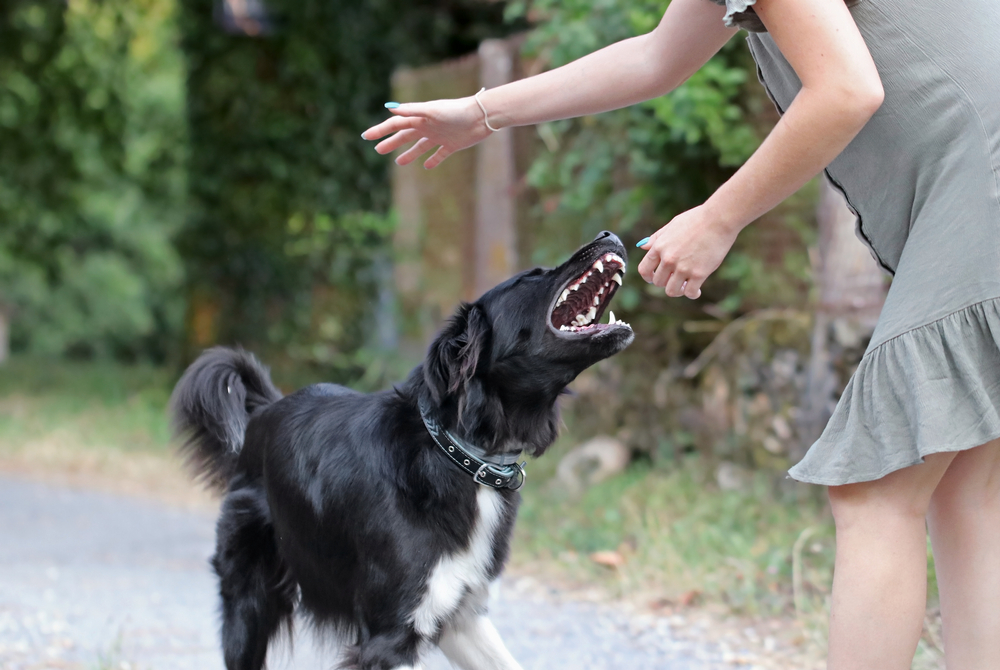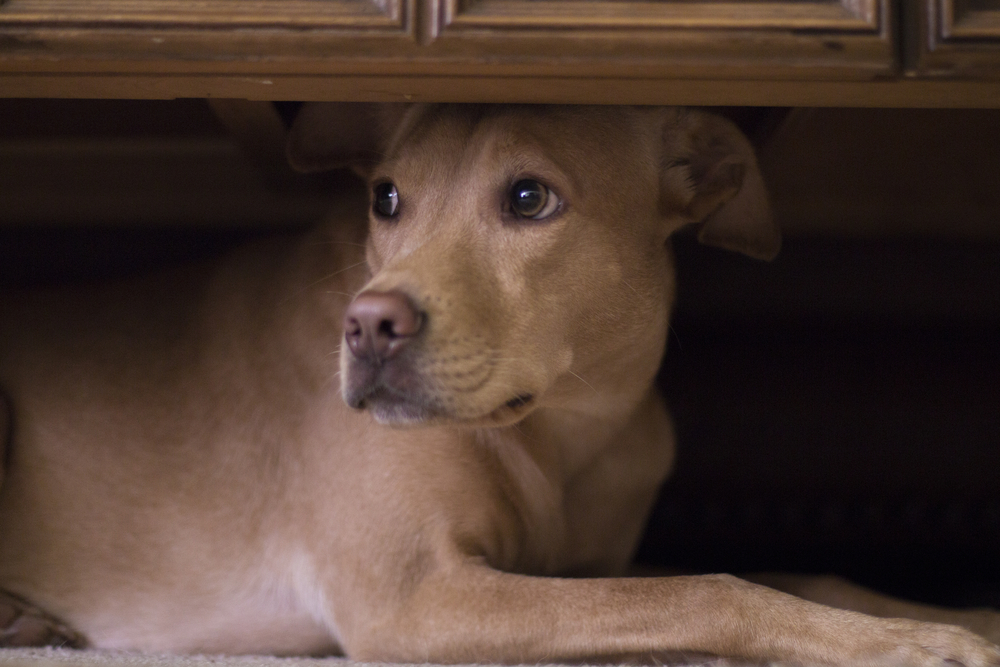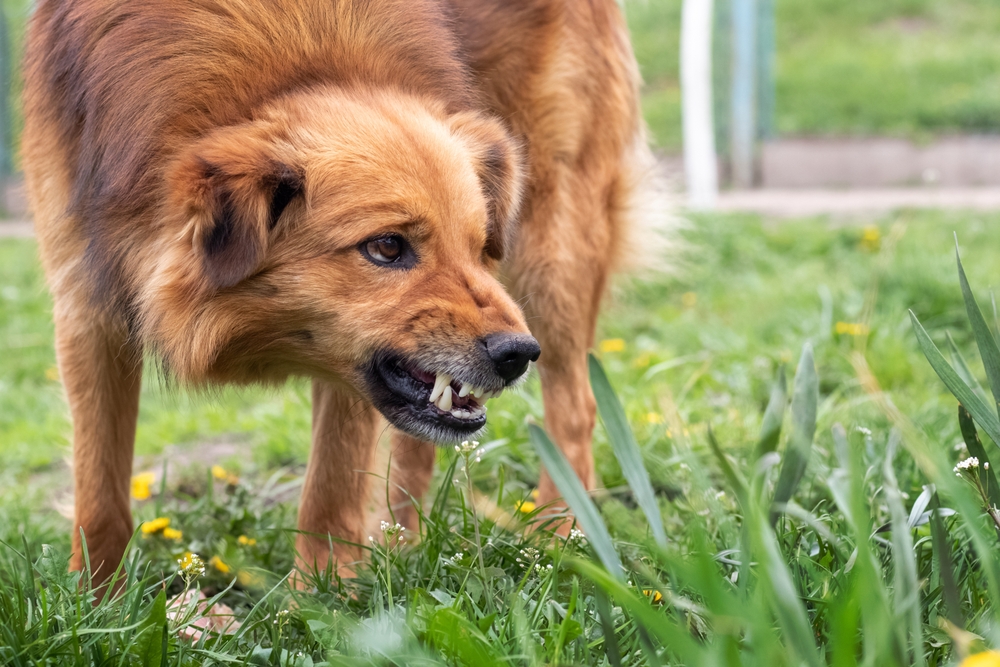An aggressive dog can be a telltale sign of something more concerning!
Did your dog suddenly snap at you aggressively with no warning at all? If so, don’t freak out yet! Many different factors can affect canine behavior. And unfortunately, some are more obvious than others. So it’s essential to understand what could be causing the behavioral change.
Aggression in dogs isn’t something you should take lightly. Not only is this a concerning behavior for them in general, but it’s especially worrisome in a usually friendly pup. So, what could suddenly cause a dog to turn aggressive toward you or other canines?
To address and change the behavior, you have to understand why it’s happening. In today’s article, I want to talk about the reasons behind canine aggression and help you understand why your adorable pooch is experiencing this sudden change in temperament.

Dominance
Like most creatures that live in social settings, canines work within a dominant hierarchy. The hierarchy serves a useful purpose: reducing conflict, maintaining order, and promoting cooperation. Dogs will usually work out on their own, where they fall in the hierarchy quickly enough.
Once they do, the dominant pups control access to toys, food, resting places, and attention. Most of them naturally assume a neutral or submissive approach towards people…. but don’t count on it. A dog inclined to challenge its owner for dominance can growl, bark, snap, and display other forms of aggression.
Lack of socialization
Unfamiliar situations or faces can be difficult for dogs that have never been properly socialized. If your pup hasn’t been trained on how to behave around different people, dogs, and places as a puppy, they might react aggressively as adults.
Change in routine
Dogs like having a routine. Suppose you change their environment or schedule without their written approval. You can anticipate some major temper tantrums.
Anything that affects their sense of security, like a new baby or pet, changing your work schedule, moving house, and so on, can throw them off balance. Feeling anxious, stressed, and unsure about what’s happening, they may start lashing out in frustration.
Medical issues
If your pup’s aggression has come out of the blue, a medical issue might be to blame. It’s especially common in older dogs, but younger dogs can be impacted too. If your dog is experiencing hair loss, has begun losing weight, and seems more lethargic than usual, their aggression could be rooted in hypothyroidism.
If convulsions accompany the aggression or if their mood seems to change rapidly, they could be suffering from seizures. Ear infections may be to blame if loud noises trigger your canine’s aggression. If they lose their temper while chewing or eating, they could have a dental crisis.
Other health complaints that can lead to sudden aggression include injury, neurological disorders, brain tumors, vision loss, and cognitive decline.
Redirected aggression
Redirected aggression is a common issue. If a dog can’t get to the source of its frustration, it might turn its aggression toward the closest available target.
For instance, if you interfere in a dog fight, your pup may redirect its aggression at the other canine onto you. Similarly, dogs spooked by a loud noise or frightened by a stranger usually vent their frustration to the nearest family member.

Fear
Aggression usually has its roots in fear. If an otherwise docile pooch suddenly becomes aggressive, they might be reacting to something they see as a threat. In these cases, figuring out what triggered the reaction is vital.
Once you know what caused it, you can take avoidance steps while you work on tackling the problem with behavioral modification techniques like counterconditioning or desensitization.
Lack of stimulation
Canines need physical exercise to be content. A small dog might be satisfied with a quick walk on the leash, but dogs with higher activity requirements will need more outlets for their pent-up energy. If they don’t get a bunch of opportunities to burn off steam, they’ll likely get destructive, bored, and prone to vent their frustrations on their household.
While we’re on the subject of exercise, don’t undervalue the importance of brain workouts, either. An enriching mental life is just as essential as an enriching physical one. Leave your pup nothing to occupy their time with; they’re unlikely to thank you.
How to soothe an aggressive dog… The quick and easy way
Now you have a better understanding of what’s driving your dog’s behavior, you can start moving forward. But before we look at some steps you can take to control your dog’s behavior, remember one thing… A tense, excitable, or agitated dog will be incredibly difficult to train.
If you want to maximize the productivity of your training sessions, calming your pup beforehand is essential. If they’re focused, calm, and alert, I guarantee both you and them will get 100% more from the training session.
Prevention is key
Anyone who promises you an overnight remedy to your dog’s aggression is a liar. Regardless of the behavior transformation technique you use, it’ll take time. Whatever it is that’s causing the aggression, you have to practice management techniques to avoid putting yourself or other people in danger.
This can involve walking your dog during tranquil times, using a muzzle on walks, or using gates to separate your dog from visitors. These solutions aren’t permanent fixes, but they’ll at least keep everyone safe in the meantime while you find ways to reduce the risk. Think about what’s caused your dog to become aggressive:
-Do they lash out at other pups during walks?
-Do they get protective over certain toys?
-Do they snarl at house guests?
Never Punish Aggressive Behavior
Screaming, yelling, and waving your fists around won’t help. Adding your own anger to an already volatile situation will only make it even more dangerous than it is already. I’m not saying it’s not frustrating and even scary when your pup displays aggressive behavior.
But heaping aggression on top of aggression never ends well. By punishing the warning signs of aggression, such as a growl, a bark, a snarl, and so on, your dog might stop giving you a heads-up before they strike. Learning to recognize those warning signs is one of the keys to managing aggression.
So, if you want your dog to learn to manage their emotions, you must lead by example and stay calm.

Final Thoughts
Aggression is a serious concern. It’s also not an issue that will just go away on its own. Whatever the cause of your dog’s behavior, it’s up to you to figure it out and find the solution.
It’s not going to be easy, and it’s not going to be overnight. But whatever you do, don’t give up. If you’re struggling to cope on your own, speak up.
There’s a world of resources that can help you turn the situation around. No matter how tough it seems, your adorable pup’s behavior can improve.
O what do you think? Have you ever gone through any of these experiences with your dog? If so, let me know how you handled it in the comments section. But don’t leave yet!
Pet Compilation has many more fantastic articles for you to check out. For instance, I highly recommend also reading: 11 Naughty Dog Signs Your Pooch Is Up to Something












